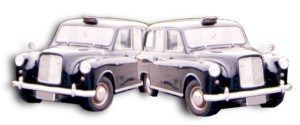Try all the doors, the bonnet, and the boot. Make sure the doors, boot, and bonnet all open and close easily and tightly. Open the driver-side door and try to move it up and down. If it seems loose, then the car has probably had some heavy use. Also, if the door drops or falls out of place when you open it, again beware of heavy use. When the door is closed, check the gap between the door and the body. If it is uneven, the car may have been in an accident. The bumper can also provide a clue to a car's accident history. Both sides of the bumper should be evenly spaced from the car. If not, an accident could have knocked the bumpers out of line.
|
|
Look inside the boot. If it smells musty, it might leak. Check under the mat or carpeting for rust or other problems. Make sure you have all the jack equipment. Check the spare tire. If it's worn unevenly, it may have been changed with a front tire to hide a front-end problem.
|
|
Check for leaks under the car. A leaking black liquid may be oil from the engine or manual transmission; reddish fluid may be from an automatic transmission; greenish, watery liquid may be antifreeze. Clear water, usually from the air conditioner, is okay. Oily, odorous fluid may be brake fluid. You can recognise petrol by its smell.
|
|
Examine the exhaust. Make sure it's cool; then rub your finger inside. You should see a white or grey powder. If your finger is black and sooty, the car may simply need a tune-up. However, if it's black and gummy, the car probably has a problem with its rings or valves and is burning oil.
|
|
Check the tires. New tires may indicate that a serious alignment problem exists. Don't be afraid of old tires. They tell an important story about the car. Inspect them carefully for wear and scuffing. If they are worn irregularly (the middle seems balder than the sides or one side or the other seems to have less tread than the middle), the car has either bad shock absorbers, poor wheel alignment or poor wheel balance. Don't forget to check the inside of the tires, the side of the tire facing the car. Sometimes, owners of tires that are badly scuffed will merely turn them around so that the good side faces out. Also check the inner side of the tires for evidence of leaking brake fluid.
|
|
Test the shock absorbers. Push up and down on each corner of the car until it starts bouncing. When you let go, the car should not bounce more than one time. If it does, you'll need to repair or replace the shock absorbers.
|
|
|
|
|



